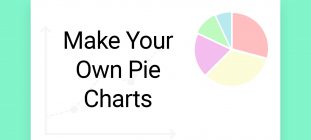
It’s so easy nowadays to build and launch a website that people with little or no technical skill can generally manage to get something off the ground with a little determination. There are many ways to build a website, and here are some tips for building a website using a website builder. Also, thanks to the wonders of WordPress and some great quality off-the-shelf themes, these sites can look rather good too.
However, building a website isn’t really a one-off task; Successful websites are constantly evolving with new content and new functionality, and there does come a point where amateur website builders may need a little help and guidance.
The items on this list are things that can separate out those who can proactively manage a successful website, and those who can just about manage to cobble one together. Wherever you think you may be on that spectrum, have a look at the list and see which things you can tick off. There’s often some room for improvement!
1. A backup solution

Most web hosting companies carry out some form of regular backup if you host your website with them. However, as is well documented, these backups often have some shortcomings. For example, a nightly backup of your website won’t be much good if you need to roll back some changes made during the day. Similarly, these backups aren’t a huge amount of use if the restoration procedure is laborious and involves frustrating dealings with the host’s support department.
Far better are the many backup options made specifically for CMS systems like WordPress. JetPack, for example, takes regular site snapshots and is easy to restore from. There are also alternatives in the form of free plugins. Whatever you choose, remember that a backup is only as good as it’s last successful restore – so be sure to test the restore procedure.
2. A good image editor

Content management systems like WordPress are very forgiving for beginners; They won’t for example, directly warn against uploading large image files and slowing a website down.
If you have images on your site and they’re not properly optimised, you could vastly impact performance and put readers off. As such, a good, simple image editing program (along with the knowledge of how to use it) should be part of your everyday toolkit.
If you’re keen to find out how well your site performs, Google PageSpeed Insights is a good first port of call. If it highlights image optimisation as an issue, then there’s probably more you could do to prepare your image files for the web and reduce those file sizes.
3. Reliable mobile devices

With the number of people browsing the web from mobile devices hovering around the 50% mark, it’s clear that only making sure your website looks good on a PC screen is no longer enough.
As such, you need access to your own mobile devices so you can check changes to your site as they’ll be seen by your entire audience. In addition to this, having a range of internet-enabled devices means always having a way to add more content or respond to comments, wherever you are. Just make sure that you take IT security seriously, by taking steps such as using a VPN service if you’re logging onto your site via public Wi-Fi. Nobody wants to get hacked because of working flexibly!
4. Access to Google Analytics and Search Console

Google Analytics and Search Console are great sources of traffic information and general health statistics for your website, respectively. Both are fairly straightforward to set up, especially if you use plugins for it, but they’re not set up by default on a new website.
Even as a beginner, it’s worth working out how to use these tools. They provide valuable insights into how your site is performing, and an early warning of potential technical issues.
5. An SSL Certificate

Google now highlights websites that don’t use HTTPS as “not secure” in its Chrome browser, and it’s widely assumed having an insecure site is bad in SEO terms too.
Adding SSL to an existing site is usually free or inexpensive, with many web hosts offering free SSL certificates. However, installing one on an existing HTTP site can present an intermediate-level technical challenge. However, it’s worth getting this done, as you don’t want to risk scaring people away from your site because they perceive it to be “non secure.”
With the possible exception of the final point, these items are all easy to procure and set up. If you’re missing any of them, getting them ticked off should put you in a better position to manage your website.


















